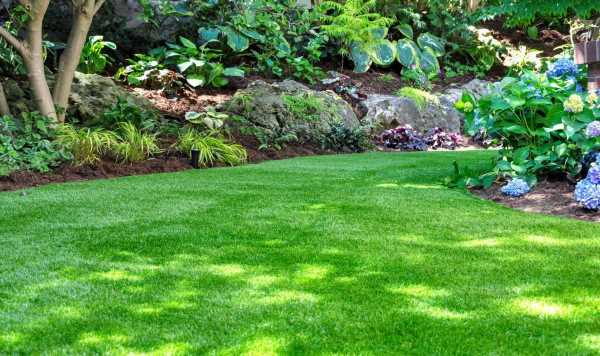Whether gardeners enjoy spending time outdoors or entertaining guests, they’ll want to make sure their grass is green and healthy this summer. While maintaining grass may seem easy enough, chances are, gardeners are probably making some common lawn care mistakes that could ruin a garden. Fiona Jenkins, gardening expert at myjobquote.co.uk shared what to avoid doing to lawns.
Not testing the soil
Most homeowners will just plant grass without any prior testing. However, Fiona explained that it is “best to test the soil before planting the grass”. She said: “Grass grows best in conditions with a soil pH level of six to 6.5.”
Soil with a pH of less than 5.0 is considered strongly acidic and is a challenging environment for most plants.
As the soil pH increases above 7.0 it becomes more basic, or alkaline. A pH above 8.5 is unusual and also is challenging for plant growth.
Mowing the lawn too much
Mowing the lawn too short is a “common mistake” homeowners can make. Many homeowners will choose to cut the lawn shorter to prolong the length of time between cuts.

The expert warned: “This can be damaging to the lawn as it can put excess stress on the grass, making it more susceptible to diseases, drought, and pests.
“As a general rule, it’s best to try to keep your lawn at a height of three inches. This will ensure it retains its top growth and stays strong enough to deal with everything nature throws at it.”
Overwatering
Fiona claimed: “One of the most common mistakes when it comes to lawns is overwatering.
“Water is a naturally vital ingredient to a healthy lawn. However, gardeners should avoid adding too much water as this can end up causing harm.”
Don’t miss…
Mrs Hinch fans ‘rave’ over simple method to descale kettle [TIPS]
‘Essential’ kitchen ingredient to remove shower head limescale [COMMENT]
Having a junk drawer may help make a home ‘always appear clean’ [EXPERT]
Applying too much water to the lawn can lead to waterlogging. It can also stunt the development of roots.
If the weather is rainy, gardeners may not need to water their lawn at all. If the weather is dry, it’s best to give your lawn around an inch of water each week.
Using the wrong fertiliser
Aside from water, fertilising the lawn is a great way to keep it healthy. However, it’s important to use the “right amount” of fertiliser.
The expert cautioned: “Using the right fertiliser for your grass is vital in ensuring the lawn remains healthy.


“Incorrect products that don’t match up with your type of grass can sometimes damage the grass. Using too much or too little of the fertiliser can also affect the grass.
“Using too much fertiliser can be damaging to the lawn and using too little fertiliser can be ineffective. Applying fertiliser at the wrong time of year can also affect the results.”
Gardeners need to check they have the right fertiliser for their lawn before applying it. Always follow the manufacturer’s instructions for the application.
Cutting with blunt blades
Dull blades can cause some “serious damage” to the lawn when it comes to cutting the grass.

Fiona said: “Blunt blades won’t effectively cut the grass. Instead, they will tear through it, damaging the grass in the process.
“Jagged blades of grass are much more susceptible to disease. The grass will also be much more likely to turn brown. You should aim to sharpen your mower blades twice a year to keep them in the best shape.”
Lack of aeration
The consequences of not aerating the lawn can be “quite significant”, claimed the expert. Aerating the lawn soil allows water to permeate the surface much more easily. This then allows the soil to absorb all of the relevant nutrients. This is particularly important when it comes to compacted or clay-heavy soil.
Gardeners can achieve aeration by simply piercing holes in the surface. Do this with a manual aerator or a standard fork. For those who have quite a large lawn, they may want to invest in a powered aerator.
Source: Read Full Article
